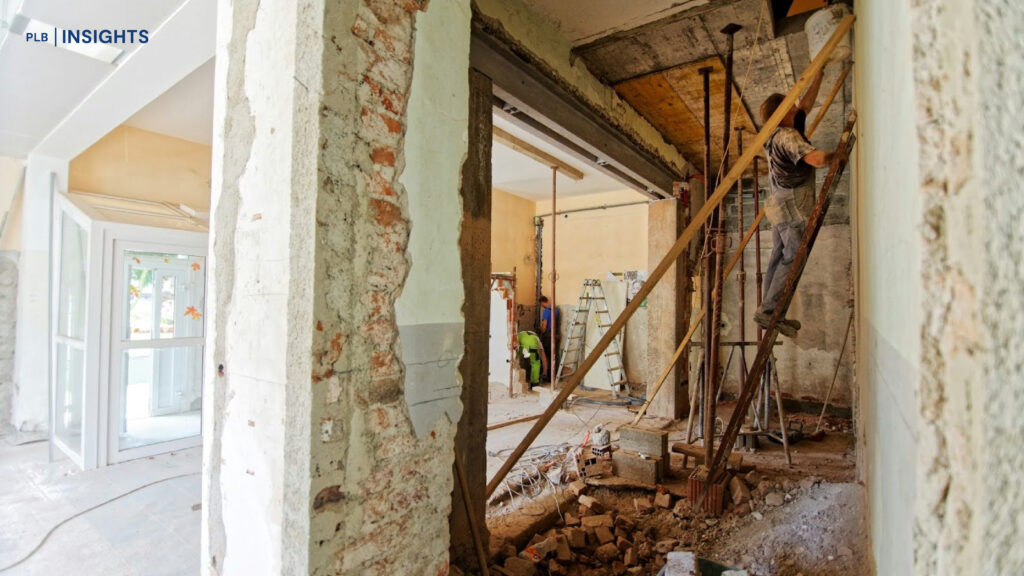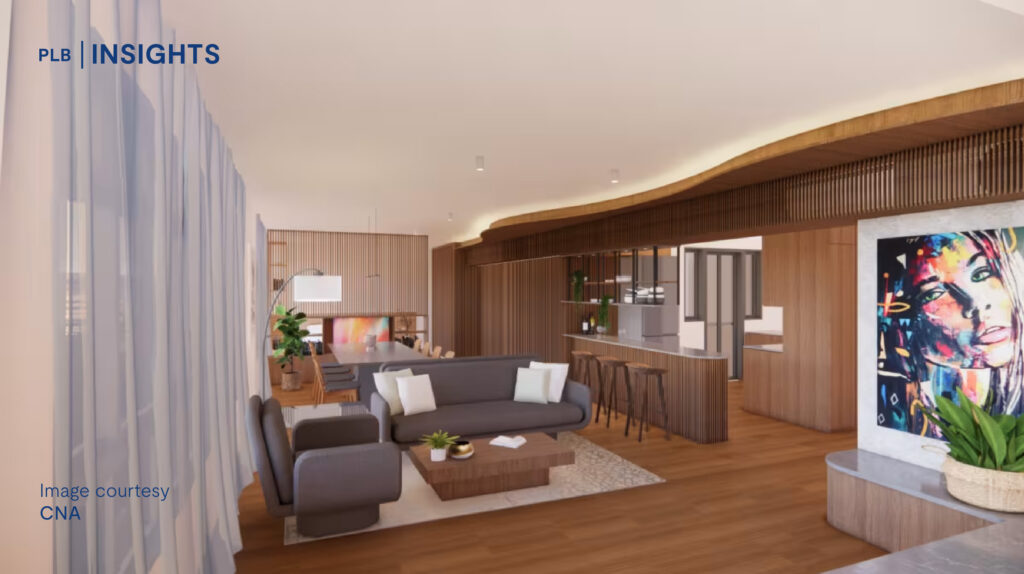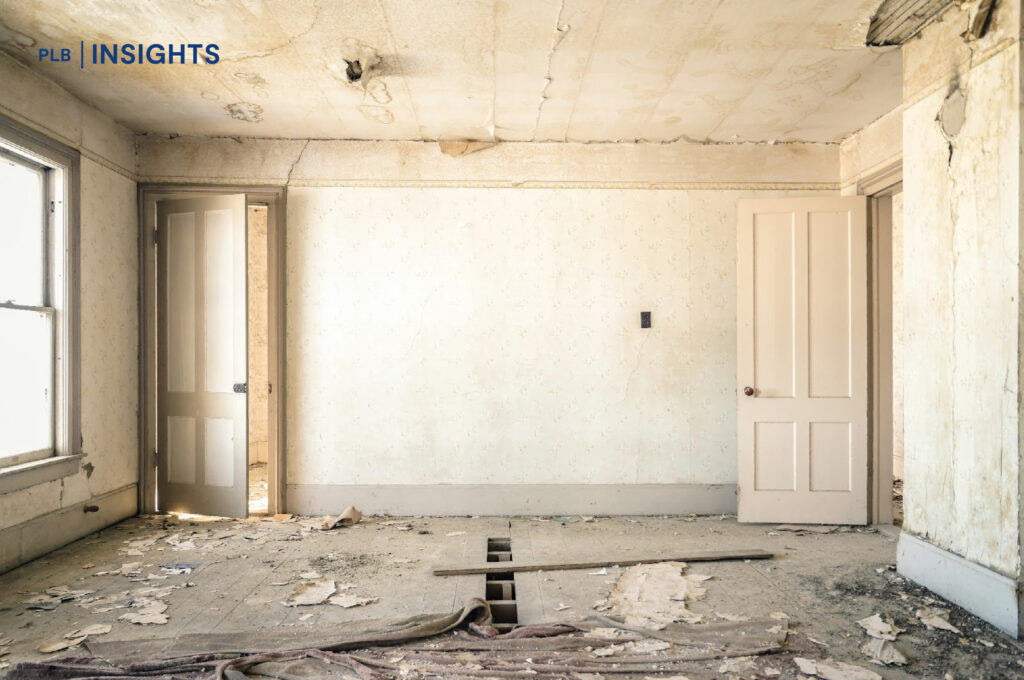
In Singapore, it is common for homeowners to view a home of around 1,000 square feet (sqft) as spacious. This perspective is due to the country’s limited land availability, which forces many residents to live in smaller homes. The situation is further complicated by the trend in new condominium developments and BTO HDB projects, which are often constructed with even smaller dimensions compared to projects of yesteryears.
To mitigate the issue of limited living space, homeowners can consider the option of removing interior walls to create larger, more open areas within their homes. This approach might involve knocking down walls that separate the kitchen from the living area, bedrooms, or any other spaces where walls obstruct the functionality and flow of the home.
The practice of removing walls, known as “hacking,” can be a practical solution for homeowners seeking to maximise their living area. By reconfiguring the layout, it is possible to create a more open and spacious environment that better suits the needs of the household. However, it is important to carefully consider both the potential benefits and drawbacks before undertaking such a renovation. This article provides an examination of the pros and cons of hacking down walls to improve the overall size and functionality of your living space.
Open-concept HDB ‘White Flat’
Just last month, HDB announced that it will be piloting its ‘White Flat’ initiative. This concept features HDB homes with no beams within the units and no partition walls separating the main living areas from the bedrooms, providing homeowners with a ‘blank canvas’ to design their spaces creatively. Applicants of these flats will be able to opt in or out of the open-concept design, offering added flexibility to future homeowners. The flexibility to customise the layout is expected to appeal particularly to couples, including elderly couples, allowing them to define different areas using furniture or glass partition walls to suit their lifestyle while simplifying maintenance. This initiative will first launch in the October Built-To-Order (BTO) cycle, starting with the Kallang-Whampoa project, and will continue to be offered in future BTO launches.

Benefits of Knocking Down Walls for a More Spacious Home
Often, new homeowners find that the layout of their recently purchased home is not to their liking, either due to aesthetics or because certain walls impede the overall functionality of the space. Fortunately, homebuyers can easily engage local professional interior designers and contractors to redesign and renovate the home, making it both visually appealing and functional to their individual tastes.
A common practice among homebuyers is to remove walls that separate the kitchen from the main living areas, such as the living and dining rooms. This creates an open-concept kitchen where the space seamlessly flows into the dining and living areas, allowing for a larger dining table and sofas. Visually, an open-concept kitchen makes the home appear more spacious and less cluttered. Additionally, cleaning and tidying are often easier, as manoeuvring within the home is simpler in open spaces compared to navigating around walls that divide smaller areas.
To create even more living space, some homebuyers choose to remove the walls of extra bedrooms or study rooms, forming one large living area that provides ample space for daily activities and family bonding. Alternatively, for homes without a designated study room, another idea is to remove the walls of unused bedrooms to create a smaller room for a study area, ideal for work-from-home arrangements. For this concept, homeowners can opt to erect a half-glass wall to separate the newly created study room from the living area. This design maintains the visual effect of a more open and spacious home while allowing parents to keep an eye on their children’s activities during work hours.
The new HDB ‘White Flat’ initiative could potentially help homeowners save significantly on renovation costs typically associated with hacking and wall removal.

Drawbacks of Removing Walls: Potential Pitfalls and Challenges
While removing walls within a home can help create an ideal living space, it may not appeal to everyone, particularly when the homeowner decides to sell the property in the future. For instance, if a bedroom wall is removed, most resale buyers would prefer the original layout with the bedroom intact. Consequently, the property would need to be marketed to a niche audience who finds the renovated layout appealing, which could lengthen the selling process and potentially impact the desired selling price.
Even if homeowners do not plan to sell the property but intend to rent out individual rooms, removing a bedroom wall can significantly reduce potential rental income. Keeping the original room intact would allow for additional rental revenue. HDB ‘White Flat’ owners should also consider the potential cost of adding walls to create bedrooms, as this might be necessary to make the home more appealing to future buyers or tenants.
Additionally, the cost of removing walls can be substantial. For a small-scale removal of a single non-load-bearing wall in an HDB flat, the cost typically ranges from $1,500 to $3,000. For more complex projects involving multiple walls or load-bearing walls in a condominium, the cost can range from $5,000 to $10,000.
It is also important to remember that erecting walls is more expensive than hacking them down. As family dynamics change, there might be a need to create additional rooms, incurring costs for both erecting new walls and the initial wall removal, resulting in a substantial expense.
At PropertyLimBrothers, we emphasise the importance of having a well-thought-out exit strategy. The potentially high costs of wall removal and its impact on future buyers or rental potential require thorough consideration. It is advisable to share your renovation plans with a trusted real estate agent who can provide valuable insights and advice on whether your renovation plans would be beneficial from an investment perspective.
Seeking Approvals For Hacking of Walls
Before starting any wall hacking or major renovations, it’s essential to obtain the necessary permits and approvals. This section outlines the steps required to secure these approvals, specifically for non-landed private residences and HDB flats.
Condominiums/Apartments
1. Consultation with a Qualified Professional:
Engage an architect or a Professional Engineer (PE) to assess the feasibility of your renovation plans. This is crucial to determine whether the modification of walls in question will affect the structural integrity of the building.
2. Approval from the Management Corporation:
Obtain approval from the Management Corporation Strata Title (MCST) of your condominium or apartment. The MCST will review your renovation plans to ensure they comply with the building’s rules and regulations.
3. Submission of Plans to BCA:
Submit the renovation plans, including detailed drawings and specifications, to the Building and Construction Authority (BCA) for approval. This step is necessary for any structural changes, especially if they involve load-bearing walls.
4. Engage a Registered Contractor:
Hire a registered contractor who is experienced in such renovations. The contractor should be aware of the necessary procedures and regulations.
5. Application for a Permit:
The contractor, along with the PE or architect, will apply for a permit from the BCA. This permit is essential for carrying out any hacking work that affects the building’s structure.
6. Inspection and Approval:
Once the application is submitted, BCA may conduct an inspection of the premises. They will evaluate the proposed changes to ensure they meet safety and regulatory standards.
7. Proceed with Renovation:
After receiving the necessary approvals and permits, you can proceed with the renovation work. Ensure that the contractor adheres to the approved plans and follows all safety guidelines.
8. Post-Renovation Inspection:
Upon completion of the renovation, the BCA may conduct a final inspection to ensure that the work has been carried out as per the approved plans and regulations.
9. Handover and Documentation:
The contractor will hand over the renovated space to you, along with all relevant documentation, including approvals and permits. Keep these documents for future reference, especially if you plan to sell the property.
HDB Flats

1. Consultation with an HDB-Registered Renovation Contractor and Qualified Professional (if needed):
Engage an HDB-registered renovation contractor to assess the feasibility and structural impact of your plans. If the hacking involves structural changes, the contractor will engage a qualified Professional Engineer (PE) to oversee the work and ensure compliance with safety standards.
2. Approval from HDB:
Submit your renovation plans to the Housing & Development Board (HDB) for approval. This includes detailed drawings and specifications of the proposed changes.
3. Submission of Application:
Your contractor will submit the renovation application through the HDB e-Services portal. Ensure all necessary documents, including floor plans and structural assessments, are included.
4. Wait for Approval:
HDB will review the application to ensure it meets all safety and regulatory requirements. This process may take a few weeks.
5. Obtain Renovation Permit:
Once the application is approved, HDB will issue a renovation permit. This permit is necessary for any hacking work, especially if it involves structural elements.
6. Notification to Neighbours:
Inform your neighbours about the renovation work. HDB requires residents to notify neighbours at least three days before commencing any noisy renovation work.
7. Commencement of Renovation:
With the permit in hand, your contractor can proceed with the renovation work. Ensure the contractor adheres to the approved plans and follows all safety guidelines.
8. Inspection by HDB:
During the renovation, HDB may conduct inspections to ensure compliance with the approved plans and regulations.
9. Completion and Final Inspection:
Upon completion of the renovation, HDB may perform a final inspection to ensure all work has been carried out according to the approved plans and safety standards.
10. Handover and Documentation:
Your contractor will hand over the renovated space to you along with all relevant documentation, including the renovation permit and any inspection reports. Keep these documents for future reference.
In Summary
While hacking down walls to combine living spaces can significantly enhance the functionality and aesthetics of a home, it is essential to carefully weigh the benefits against the potential drawbacks. Creating a more open and spacious environment can improve daily living and increase the home’s appeal to current occupants, but it may not always align with future buyers’ preferences, potentially complicating resale or rental prospects. Additionally, the financial cost and need for compliance with regulatory requirements must be considered.
By thoroughly planning and consulting with professionals, homeowners can make informed decisions that balance immediate desires with long-term implications. Whether you are looking to enhance your living space for personal enjoyment or future investment, understanding the process and implications of wall hacking ensures that your renovation efforts yield the desired outcomes while maintaining safety and structural integrity.
If you need guidance or have any burning questions about how your renovation plans might impact your property investment journey, feel free to connect with us here. Our Inside Sales Team Consultants, with their expertise and experience, are ready to offer you a personalised consultation session.







